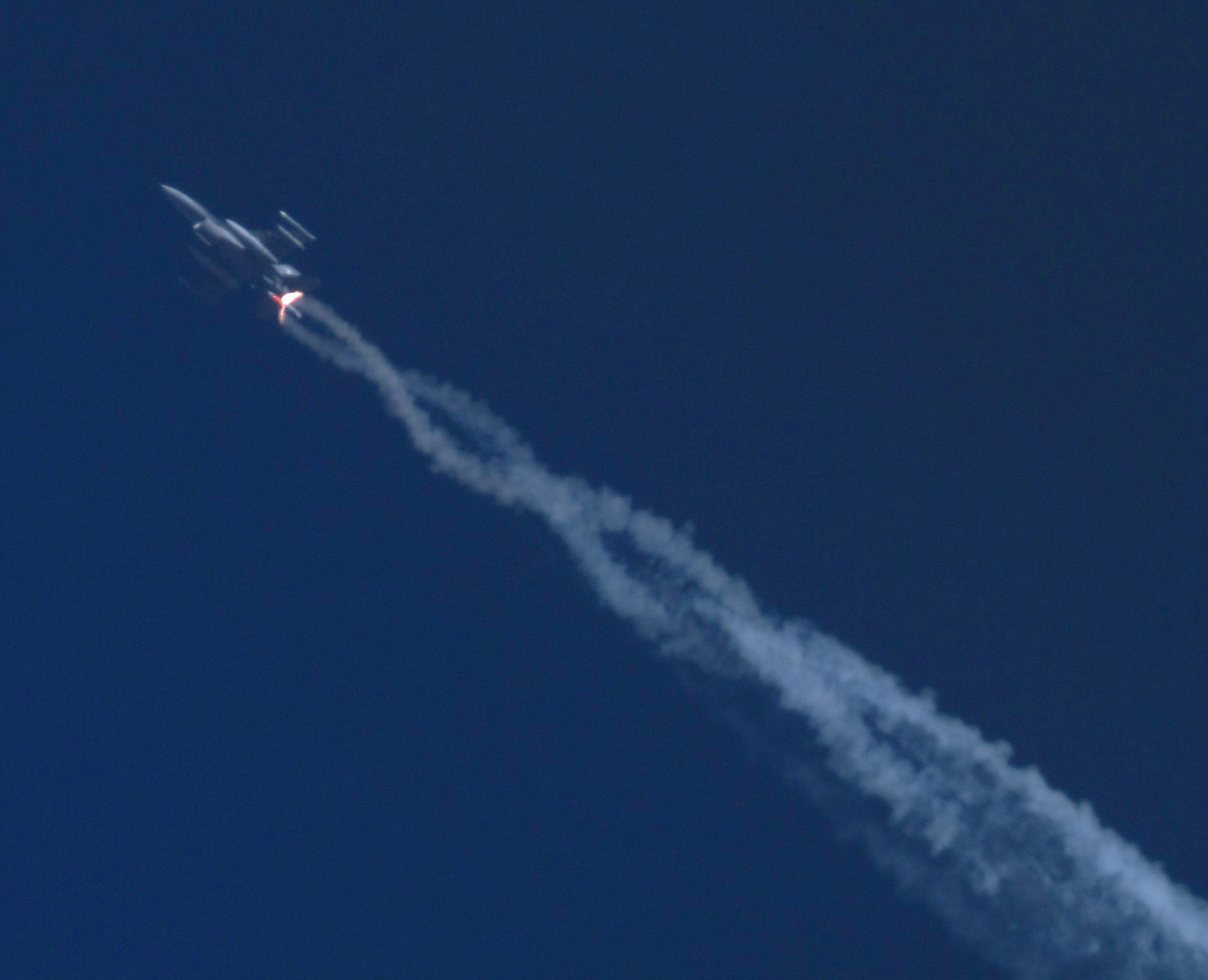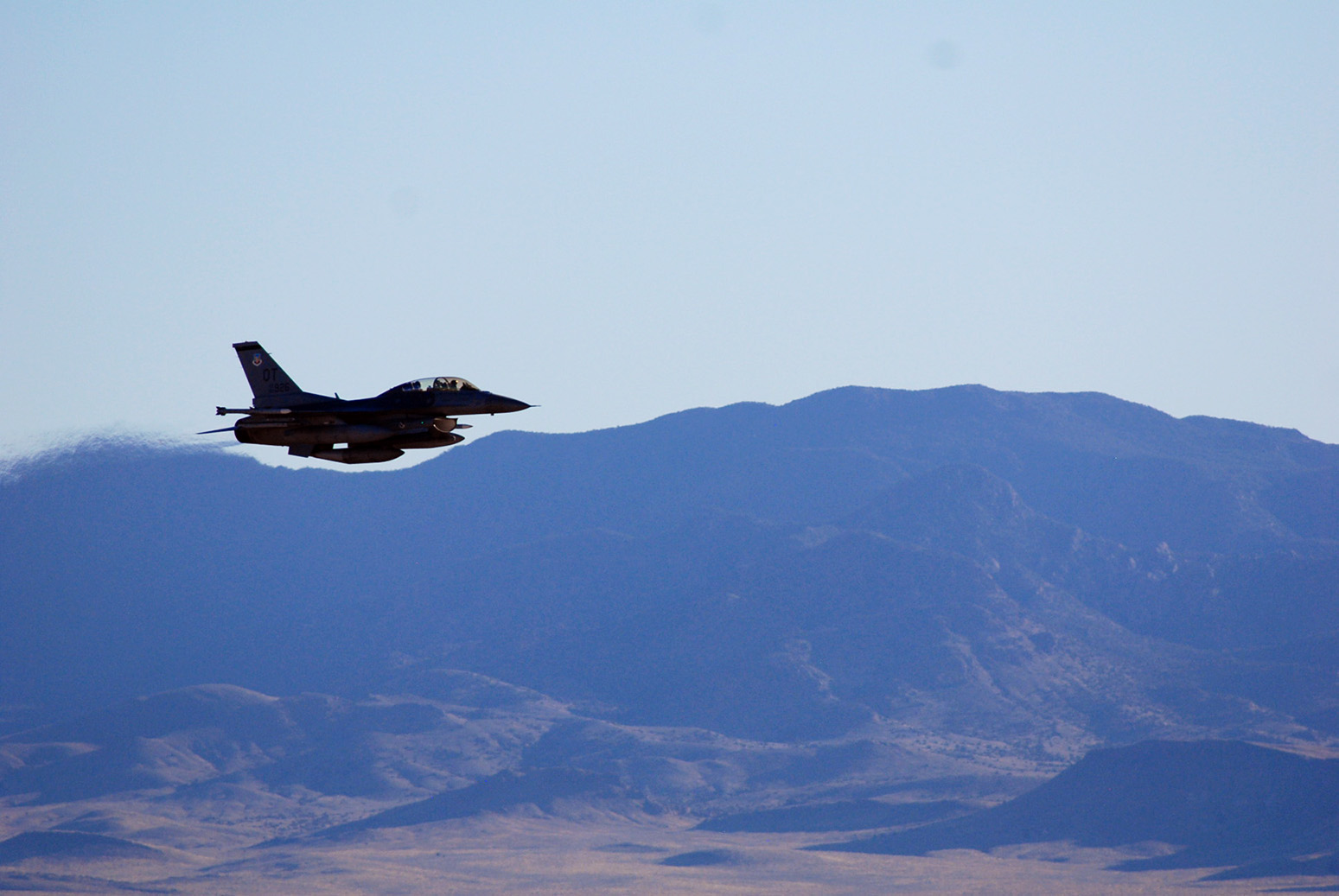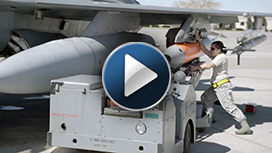ALBUQUERQUE, N.M. — From a distance, the drop of a mock nuclear weapon — containing only non-nuclear components — was a mere puff of dust rising from a dry lake bed at Nevada’s Tonopah Test Range. However, it marked the start of a new series of test flights vital to the nation’s B61-12 weapon refurbishment program.

Initial data showed the March 14 test was a success, said officials at Sandia National Laboratories, which runs Tonopah. For months, teams will be analyzing a wealth of data they collected from this first of a qualification test series planned over the next three years.
Those watching from the tower of the range’s Test Operations Center felt “excitement and pleasure that it all worked as we expected,” said Anna Schauer, director of Sandia’s Stockpile Resource Center.
The B61-12 consolidates and replaces four B61 variants in the nation’s nuclear arsenal. The first production unit in the weapon’s life extension program is scheduled to be completed in 2020.
Test day dawned cloudless and wind-free, perfect weather at the range, an area of 280 square miles with two main target areas on flat lake beds sitting between mountain ranges. Workers from Sandia and contractor Navarro Research and Engineering operated tracking telescopes, remote cameras and other instruments in the field to gather information on the reliability, accuracy and performance of the weapon under conditions meant to replicate operations.
An F-16C from Nellis Air Force Base near Las Vegas, chosen to drop the test unit representing a B61-12, began with a dry run over one of the lake beds. But during his next pass for the planned release, he had to roar off after a small group of wild horses ambled onto the lake bed.

A video feed from a remote camera in the area showed the horses trotting away to safety, herded by wranglers: security officers in a white pickup, its headlights and rack lights pulsing. “That’s a first for us,” said test director Joe Simile of Sandia. “We’ve never had to chase horses away from the target.”
The extra pass meant the F-16 carrying the test unit and a companion wingman F-16 would have to refuel in flight from a tanker airplane circling the area before returning to base.
F-16 final pass: ‘Commence run’
Then, horses cleared off, the pilots circled back. The test director queried those responsible for the various aspects of the test, from telemetry to the pilot of the drop plane. One by one they gave the test a go and a disembodied voice over the intercom announced, “Range is green. Cleared to release.”
The announcement, “Commence run,” galvanized dozens of people watching and listening to live feeds of preparations at the tower. Most dashed out to the balconies to watch — a natural reaction despite knowing the lake bed was miles away and they’d see nothing more than dust rising from the high-altitude drop. The video feed, a much closer look, showed the F-16 release the test unit, the unit’s spin rocket motor ignite and the mock weapon fall through the air.

“It’s great to see things all come together: the weapon design, the test preparation, the aircraft, the range and the people who made it happen,” Schauer said.
After the drop, the two F-16s turned to scream past the control tower about a half mile away, giving observers a closer look at the planes.
On the lake bed, the only sign of the drop was a surprisingly neat hole. An hour or so after the test, Simile stood near the hole, describing plans to recover the weapon, his discussion punctuated by a warning beep-beep-beep from a truck backing up to unload recovery equipment.
Crews were back later to dig the mock weapon out of the dirt.
“The test unit recovery went very well, with the unit packaged up for return to Albuquerque,” said Lee Post, B61-12 flight test lead. “We can only hope our future tests go this well.”